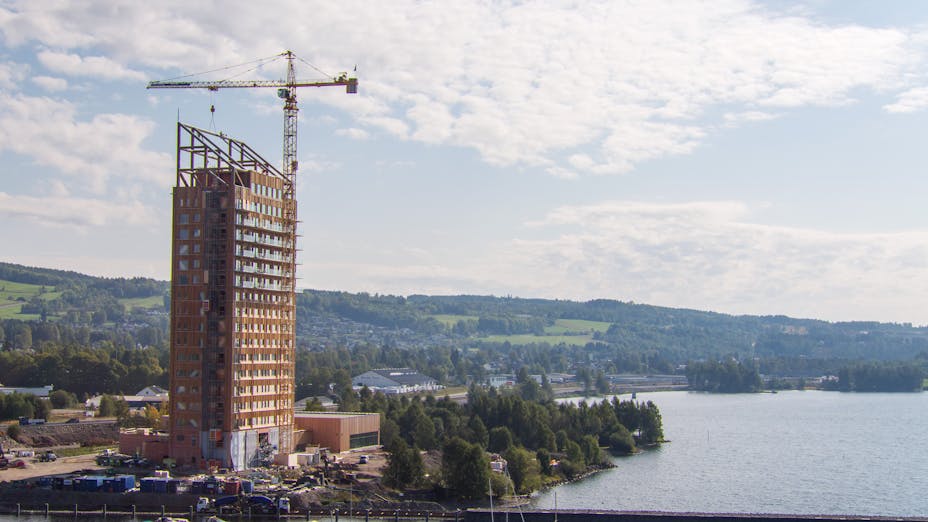Rising 85.4 meters above Brumunddal, Norway, about 1.5 hours north of Oslo is the latest entry in the ‘world’s tallest timber building’ category, Mjøstårnet.
Like the previous record holder, the 53-meter Brock Commons Tallwood House in Vancouver, Mjøstårnet is made of a combination of cross-laminated timbre (CLT) and glue-laminated timber (GLT), two kinds of engineered wood products common in tall timbre construction.
A combination of desirable traits
There are a few primary reasons for the growing use of wood to make tall buildings, particularly in places like Norway, Canada, Sweden and Switzerland—the sustainability profile of the wood compared to other materials; the design flexibility and beauty of it; and finally, the fire safety.
“Mjøstårnet is built to withstand a complete burnout,” says Evan Andersen, Fire Safety Engineer for Sweco, the structural engineer on the project. “Our tests and calculations show that Mjøstårnet will not collapse, even after a severe fire. With all its safety measures, it’s safer than most buildings,” he says in this short video about the project.
Those fire safety measures include ROCKWOOL’s non-combustible insulation in the inner and outer walls and floors, which contribute to creating effective compartments to contain a fire should one arise. Proper fire compartmentalization is essential in giving building occupants more time to evacuate and fire brigades more time to extinguish the fire.
Sustainability, built-in
Sustainability is another key selling point in the trend toward taller timber constructions. In countries like Norway and Canada where trees plentiful, the energy used to process, produce and transport the timber is actually lower than concrete and steel. What’s more, the subcontractor that supplied the wooden structures to the building also plants at least two trees for each tree it uses on its projects.
The result is a stunning piece of architecture—it won Gold at the New York Design Awards 2018—with a desirable combination of safety, sustainability, good looks and functional performance.
“We are proud to have been involved in such a prestigious project and to be able to contribute to the fire safety and sustainability profile of Mjøstårnet as well as its thermal and acoustic performance with both our stone wool insulation and our Rockfon acoustic ceiling tiles,” says Henrik Frank Nielsen, Head of Insulation for Northeast Europe, ROCKWOOL Group.
Project background:
Work on the 18-story mixed-use Mjøstårnet tower began in mid-2017 and was completed in March 2019. It has a combined floor area of 11,300 square meters and includes apartments, a hotel, offices, restaurant and a rooftop terrace overlooking the fjord. It has since earned international attention, including winning a Gold at the New York Design Awards 2018.
Fire safety achieved in several ways:
•The CLT and GLT wood is one; the thickness and arrangement of the beams is such that they will retain their load-bearing abilities during a severe fire and burn very slowly.
•Each room and floor is also a fire compartment, designed to prevent a fire from spreading;
•Sprinkler systems throughout the building;
•Fire strips that expand to protect steel joints from heat and;
•More than 5,500 sqm of ROCKWOOL non-combustible stone wool insulation in the inner and outer walls and floors.



